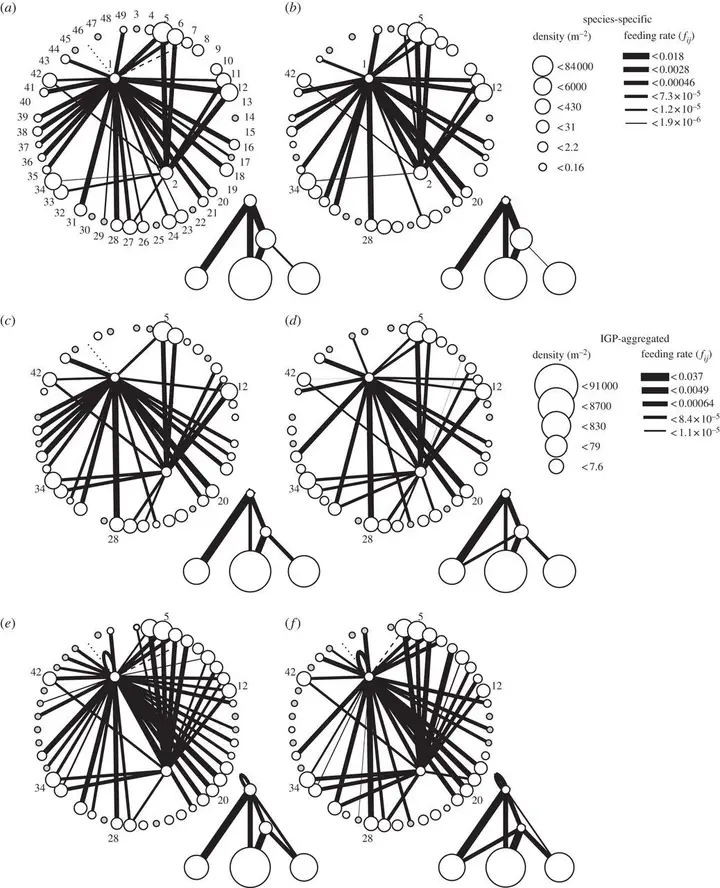Trophic omnivory across a productivity gradient: intraguild predation theory and the structure and strength of species interactions

Abstract
Intraguild predation theory centres on two predictions: (i) for an omnivore and an intermediate predator (IG-prey) to coexist on shared resources, the IG-prey must be the superior resource competitor, and (ii) increasing resource productivity causes the IG-prey’s equilibrium abundance to decline. I tested these predictions with a series of species-rich food webs along New Zealand’s rocky shores, focusing on two predatory whelks, Haustrum haustorium, a trophic omnivore, and Haustrum scobina, the IG-prey. In contrast to theory, the IG-prey’s abundance increased with productivity. Furthermore, feeding rates and allometric considerations indicate a competitive advantage for the omnivore when non-shared prey are considered, despite the IG-prey’s superiority for shared prey. Nevertheless, clear and regular cross-gradient changes in network structure and interaction strengths were observed that challenge the assumptions of current theory. These insights suggest that the consideration of consumer-dependent functional responses, non-equilibrium dynamics, the dynamic nature of prey choice and non-trophic interactions among basal prey will be fruitful avenues for theoretical development.